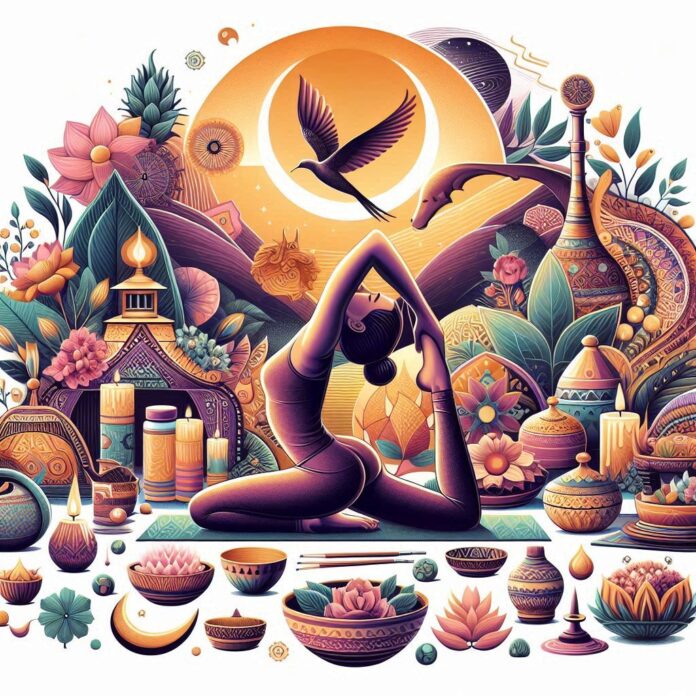Hatha Yoga is a comprehensive system of physical and mental practices designed to align and calm the body, mind, and spirit in preparation for meditation. Originating in ancient India, Hatha Yoga focuses on postures (asanas), breathing techniques (pranayama), and purification practices (shatkarma) to cultivate physical strength, flexibility, and mental clarity. By integrating these elements, practitioners can achieve a balanced state of well-being and inner peace. This article delves into the various components of Hatha Yoga, exploring their specific roles and numerous benefits, offering insights into how each practice can enhance your overall health and mindfulness journey.
I. Hatha Yoga Postures: Roles and Benefits.
Hatha Yoga is a widely practiced branch of yoga that focuses on physical postures, known as asanas. Each asana has specific roles and benefits, contributing to overall physical and mental well-being.
1. Mountain Pose (Tadasana):
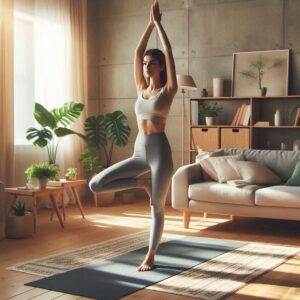
Mountain Pose serves as a foundational posture in Hatha Yoga, playing a crucial role in improving posture, balance, and alignment. It requires standing tall with feet together, grounding down through the feet, and elongating the spine upwards. This posture enhances awareness of body alignment, strengthens the thighs, knees, and ankles, and helps to improve overall posture. Additionally, it can reduce flat feet by engaging the arches and creating a stable base.
2. Downward-Facing Dog (Adho Mukha Svanasana):
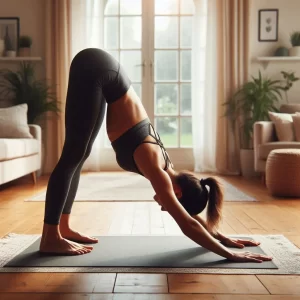
Downward-Facing Dog is a dynamic pose that stretches and strengthens the entire body, particularly focusing on the shoulders, hamstrings, calves, arches, and hands. By lifting the hips upward and pressing the heels towards the ground, this posture lengthens the spine and strengthens the arms and legs. It is known to relieve stress and calm the mind while also improving digestion and alleviating back pain. This pose is commonly used in various yoga sequences as a transitional or resting posture.
3. Warrior I (Virabhadrasana I):

Warrior I is a powerful and grounding pose that enhances strength and endurance. It involves stepping one foot back and bending the front knee, with arms reaching overhead. This posture increases flexibility in the hips and strengthens the legs, shoulders, arms, and back. Warrior I also helps improve focus, balance, and stability, making it an excellent pose for building mental and physical resilience. The chest, lungs, and psoas muscles are stretched, promoting better breathing and posture.
4. Warrior II (Virabhadrasana II):

Warrior II is a stamina-building pose that enhances concentration and opens the hips. With legs positioned wide apart and arms extended parallel to the ground, this posture strengthens the legs and core. It also tones the legs and buttocks while increasing stamina and endurance. Warrior II helps open the hips and chest, improving circulation and promoting a sense of balance and groundedness. This pose is integral to many yoga sequences for its ability to cultivate strength and focus.
5. Triangle Pose (Trikonasana):
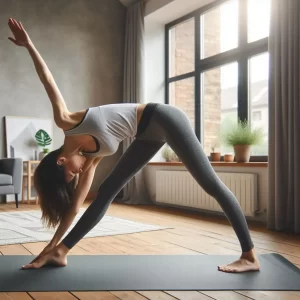
Triangle Pose is a posture that enhances flexibility and balance, targeting the hips, groin, hamstrings, and shoulders. It involves extending one leg forward and the other back, reaching one arm down towards the front foot and the other up towards the sky. This posture stretches and strengthens the legs, hips, and spine, improving overall body alignment. Triangle Pose is also beneficial for digestion and stress reduction, as it stimulates the abdominal organs and promotes relaxation. This pose is essential for developing a well-rounded yoga practice.
6. Tree Pose (Vrksasana):
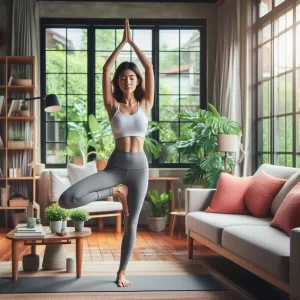
Tree Pose improves balance and stability by requiring the practitioner to stand on one leg while placing the other foot on the inner thigh or calf of the standing leg, with arms either in a prayer position or extended overhead. This pose enhances balance and stability, strengthening the thighs, calves, ankles, and spine. Additionally, it opens the hips and stretches the groin and inner thighs, contributing to overall lower body flexibility and strength. Practicing Tree Pose regularly helps improve concentration and mental focus, making it an essential posture for achieving mental and physical equilibrium.
7. Bridge Pose (Setu Bandhasana):
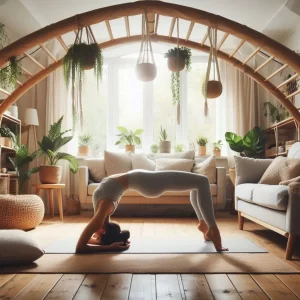
Bridge Pose is a back-bending posture that strengthens the back and opens the chest, enhancing spinal flexibility. By lying on the back, bending the knees, and lifting the hips while interlacing the hands beneath the body, this pose stretches the chest, neck, and spine. It strengthens the back, buttocks, and hamstrings, providing stability and support to the lower back. Bridge Pose also stimulates the abdominal organs and improves digestion by increasing blood flow to the digestive tract. This posture is beneficial for relieving stress and tension in the back and shoulders, promoting overall relaxation and well-being.
8. Seated Forward Bend (Paschimottanasana):
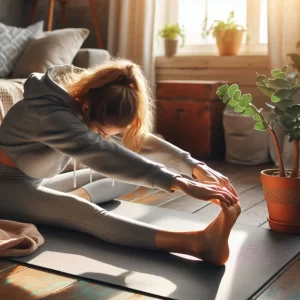
Seated Forward Bend stretches the entire back of the body, from the heels to the head, by having the practitioner sit with legs extended and reach forward to touch the feet. This posture calms the mind and relieves stress, making it an effective pose for mental relaxation. It stretches the spine, shoulders, and hamstrings, enhancing flexibility and relieving tension in these areas. Additionally, Seated Forward Bend improves digestion and stimulates the liver and kidneys, contributing to overall internal organ health. This pose is particularly useful for reducing anxiety and promoting a sense of peace and relaxation.
9. Cobra Pose (Bhujangasana):

Cobra Pose strengthens the spine and opens the chest and lungs, providing a powerful backbend that enhances spinal flexibility. By lying face down and lifting the chest while keeping the pelvis grounded, this posture strengthens the spine, buttocks, and shoulders. It opens the chest and lungs, improving respiratory function and increasing lung capacity. Cobra Pose also stimulates the abdominal organs, aiding digestion and relieving menstrual pain. Regular practice of this pose helps improve posture and alleviate back stiffness, making it an essential part of a well-rounded yoga routine.
10. Child’s Pose (Balasana):
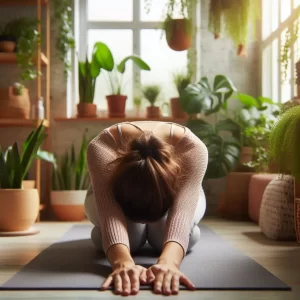
Child’s Pose is a resting posture that relaxes the body and mind, providing gentle stretches to the hips, thighs, and ankles. By kneeling and sitting back on the heels with the forehead resting on the ground, this pose calms the mind and reduces stress and fatigue. It gently stretches the hips, thighs, and ankles, relieving tension in these areas and promoting relaxation. Child’s Pose is also effective in relieving back and neck pain when performed with proper support for the head and torso. This posture is often used as a resting pose during yoga practice to provide a moment of relaxation and mental clarity.
11. Corpse Pose (Savasana):
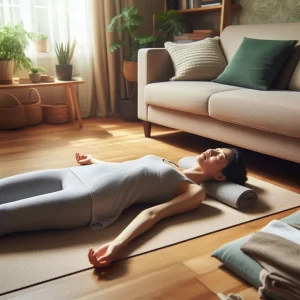
Corpse Pose is a relaxation posture typically performed at the end of a yoga session, allowing the body to rest and integrate the benefits of the practice. By lying flat on the back with arms relaxed at the sides and palms facing up, this pose helps relax the body and reduce stress. It calms the mind and improves focus, making it easier to achieve a state of deep relaxation. Corpse Pose also helps lower blood pressure and relieve insomnia, promoting overall mental and physical health. This posture is essential for concluding a yoga practice, providing a moment of stillness and rejuvenation.
II. Hatha Yoga Breathing Techniques (Pranayama): Roles and Benefits.
Pranayama, the practice of controlled breathing, is a fundamental aspect of Hatha Yoga. It involves various techniques designed to regulate the breath, enhance lung capacity, and improve overall physical and mental health.
1. Nadi Shodhana (Alternate Nostril Breathing):
Nadi Shodhana, or Alternate Nostril Breathing, balances the left and right hemispheres of the brain, promoting mental clarity and calmness. By alternating the breath between the nostrils, this technique reduces stress and anxiety, enhances respiratory function, and balances the body’s energy channels (nadis). Additionally, it improves focus and concentration, making it an effective practice for mental and emotional equilibrium.
2. Kapalabhati (Skull Shining Breath):
Kapalabhati involves rapid, forceful exhalations and passive inhalations, designed to detoxify the respiratory system and energize the mind. This technique cleanses the lungs and sinuses, improves digestion and metabolism, and increases energy levels and mental clarity. It also strengthens the diaphragm and abdominal muscles, contributing to overall respiratory health and vitality.
3. Bhramari (Bee Breath):
Bhramari, or Bee Breath, involves making a humming sound during exhalation, which soothes the nervous system and calms the mind. This practice reduces stress and tension, alleviates anger and anxiety, and improves concentration and memory. Additionally, it induces deep relaxation, making it a valuable technique for mental and emotional well-being.
4. Ujjayi (Ocean Breath):
Ujjayi, also known as Ocean Breath, involves constricting the throat to create a soothing sound during inhalation and exhalation. This technique enhances focus and generates internal heat, improving concentration and mindfulness. It increases oxygenation of the blood, calms the nervous system, and helps regulate body temperature during practice, making it beneficial for both physical and mental health.
5. Anulom Vilom (Alternate Nostril Breathing):
Anulom Vilom is similar to Nadi Shodhana but involves a different pattern of breathing. This technique purifies the energy channels and balances the breath, enhancing lung capacity and efficiency. It balances the autonomic nervous system, reduces stress, and promotes relaxation. Additionally, it improves cardiovascular health, making it a comprehensive practice for overall well-being.
6. Bhastrika (Bellows Breath):
Bhastrika, or Bellows Breath, involves forceful inhalations and exhalations similar to a bellows, designed to energize the body and clear the mind. This vigorous breathing technique significantly increases oxygen supply to the body, detoxifies the respiratory system, and boosts metabolism and digestion. Additionally, it enhances mental clarity and energy levels, making it a powerful practice for invigorating both the body and mind.
7. Sheetali (Cooling Breath):
Sheetali, or Cooling Breath, involves inhaling through the rolled tongue and exhaling through the nose, effectively cooling the body and calming the mind. This practice is beneficial for reducing body heat, alleviating stress and anxiety, and improving digestion. It also calms the nervous system, making it an excellent technique for promoting relaxation and mental peace during hot weather or stressful situations.
8. Sitkari (Hissing Breath):
Sitkari, or Hissing Breath, involves inhaling through the teeth and exhaling through the nose, producing a cooling effect on the body and relaxing the mind. This technique helps cool the body, reduce internal heat, and promote relaxation and mental calmness. It is particularly effective in alleviating stress and anxiety, as well as improving focus and concentration, making it a useful practice for managing emotional and mental well-being.
9. Surya Bhedana (Right Nostril Breathing):
Surya Bhedana involves inhaling through the right nostril and exhaling through the left, stimulating the sympathetic nervous system and energizing the body. This practice increases energy and alertness, stimulates the digestive system, and improves focus and concentration. Additionally, it enhances respiratory function, making it a beneficial technique for invigorating the body and sharpening the mind.
10. Chandra Bhedana (Left Nostril Breathing):
Chandra Bhedana involves inhaling through the left nostril and exhaling through the right, activating the parasympathetic nervous system and promoting relaxation. This technique induces calmness and relaxation, reduces stress and anxiety, and lowers blood pressure. It also improves sleep quality, making it an effective practice for enhancing overall mental and physical well-being, especially before bedtime.
III. Hatha Yoga Meditation and Relaxation Techniques: Roles and Benefits.
Hatha Yoga not only focuses on physical postures (asanas) and breathing techniques (pranayama) but also incorporates meditation and relaxation practices. These techniques are essential for achieving mental clarity, emotional balance, and overall well-being.
1. Mindfulness Meditation (Vipassana):
Mindfulness Meditation, or Vipassana, involves observing thoughts and sensations without judgment, aiming to cultivate a deep sense of awareness and presence. This technique helps reduce stress and anxiety by encouraging a non-reactive awareness of the present moment. It enhances emotional regulation by allowing practitioners to acknowledge and accept their emotions without becoming overwhelmed. Additionally, it improves focus and concentration, promoting overall mental clarity and well-being. This practice is widely regarded for its ability to foster a calm and centered mind, contributing to better mental health and a more balanced life.
2. Loving-Kindness Meditation (Metta):
Loving-Kindness Meditation, or Metta, focuses on developing compassion and unconditional love towards oneself and others. Practitioners repeat phrases of goodwill and kindness, often directed first at themselves and then at others, including friends, neutral individuals, and even those with whom they have conflicts. This practice increases feelings of compassion and empathy, reducing negative emotions and improving mood. It enhances social connections and relationships by fostering a sense of connectedness and understanding. Additionally, Metta meditation promotes emotional healing and resilience, helping individuals cultivate a more positive outlook on life and better handle emotional challenges.
3. Guided Visualization:
Guided Visualization involves imagining peaceful and relaxing scenarios to achieve a state of relaxation and mental clarity. Often led by a teacher or through audio recordings, this technique reduces stress and promotes relaxation by creating vivid mental images of tranquil environments. It enhances creativity and problem-solving skills by allowing the mind to explore new ideas and solutions in a relaxed state. Additionally, guided visualization improves mood and mental well-being, helping individuals achieve specific goals and intentions through positive imagery. This practice is particularly beneficial for those looking to relax and reset their minds, fostering a sense of calm and mental clarity.
4. Body Scan Meditation:
Body Scan Meditation is a practice that involves mentally scanning the body for tension and consciously relaxing each part. Starting from the toes and moving up to the head, practitioners focus on each body part in sequence, acknowledging any sensations and letting go of tension. This technique reduces physical tension and pain, enhancing body awareness and mindfulness by bringing attention to the present state of the body. It promotes deep relaxation and stress relief, making it an effective practice for reducing anxiety and improving sleep quality. Overall, body scan meditation contributes to greater physical and mental well-being, helping individuals connect with their bodies mindfully and compassionately.
5. Yoga Nidra (Yogic Sleep):
Yoga Nidra, also known as Yogic Sleep, is a deep relaxation practice that takes practitioners into a state between wakefulness and sleep. It involves guided instructions to relax the body and mind, often starting with setting an intention and then moving through stages of body awareness, breath awareness, and visualization. This practice reduces stress and anxiety by promoting a profound state of relaxation and calm. It improves sleep quality and reduces insomnia, helping individuals achieve restful and restorative sleep. Additionally, Yoga Nidra enhances mental clarity and focus, and promotes deep physical and emotional healing, making it a powerful tool for overall health and well-being.
6. Breath Awareness Meditation:
Breath Awareness Meditation involves focusing on the breath to anchor the mind in the present moment. As a foundational practice in Hatha Yoga, it plays a crucial role in calming the mind and reducing stress by encouraging a state of mindful presence. This technique also improves concentration and mindfulness, helping practitioners develop a deeper connection to their breathing patterns. Enhanced respiratory function is another benefit, as focused breathing promotes better oxygen exchange and lung capacity. Overall, Breath Awareness Meditation promotes emotional stability and clarity, fostering a balanced mental state and improved well-being.
7. Chakra Meditation:
Chakra Meditation focuses on balancing the energy centers, or chakras, in the body. Practitioners visualize each chakra and use affirmations or sounds to activate and harmonize these energy centers. This practice enhances energy flow and vitality, leading to a more vibrant physical state. It also promotes emotional and spiritual healing by addressing blockages and imbalances within the chakras. Balancing these energy centers improves overall well-being and harmony, helping practitioners feel more aligned and connected within themselves and their environment.
8. Mantra Meditation:
Mantra Meditation involves the repetition of a word or phrase (mantra) to focus the mind and achieve a meditative state. Practiced either silently or aloud, this technique reduces stress and promotes relaxation by providing a mental anchor. It enhances concentration and mental clarity, allowing practitioners to clear their minds and focus on the present moment. Additionally, Mantra Meditation connects practitioners to deeper spiritual states, fostering a sense of inner peace and emotional balance. This practice is especially beneficial for those seeking to cultivate a tranquil and focused mind.
9. Transcendental Meditation:
Transcendental Meditation is a technique where practitioners silently repeat a specific mantra to transcend ordinary thinking and achieve a state of restful alertness. This practice reduces stress and anxiety by promoting a profound state of relaxation. It enhances cognitive function and creativity, allowing for clearer thinking and problem-solving. Additionally, Transcendental Meditation improves overall mental and physical health by fostering a deep sense of inner peace and relaxation, making it a powerful tool for achieving a balanced and healthy lifestyle.
10. Silent Meditation (Zazen):
Silent Meditation, or Zazen, involves sitting in silence and observing thoughts and sensations without attachment. This technique aims to cultivate mindfulness and insight by encouraging practitioners to simply be present with their experiences. It reduces mental clutter and enhances clarity, helping individuals develop a more focused and clear mind. Silent Meditation promotes deep relaxation and stress relief, making it an effective practice for managing anxiety and fostering emotional stability. By enhancing mindfulness and present-moment awareness, Zazen helps practitioners achieve a profound sense of inner peace and equilibrium.
IV. Hatha Yoga Purification Practices (Shatkarma): Roles and Benefits.
Shatkarma, or the six purification practices, are fundamental techniques in Hatha Yoga designed to cleanse the body and mind. These practices help prepare the body for deeper yoga practices by removing impurities and balancing the body’s internal systems.
1. Neti (Nasal Cleansing):
Neti involves cleansing the nasal passages with water (Jala Neti) or a thread (Sutra Neti). This practice is essential for maintaining respiratory health and clear breathing pathways. By using a saline solution or thread to clear the nasal passages, Neti helps to eliminate accumulated mucus and pollutants. The benefits of Neti include clearing nasal congestion and improving breathing, reducing allergies and sinus infections, and enhancing focus and mental clarity. This practice also promotes overall respiratory health, making it a vital part of Hatha Yoga’s purification techniques.
2. Dhauti (Cleansing of the Digestive Tract):
Dhauti involves various techniques to cleanse the digestive tract, including swallowing a cloth (Vastra Dhauti) or drinking saline water (Jala Dhauti). This practice aims to remove toxins and improve digestive health by thoroughly cleaning the stomach and esophagus. Dhauti improves digestion and alleviates gastrointestinal issues, such as acidity and bloating. It also promotes detoxification, removing harmful substances from the digestive system, and enhances overall digestive health, contributing to a balanced and healthy body.
3. Nauli (Abdominal Churning):
Nauli involves churning the abdominal muscles to massage and tone the internal organs. This practice is performed by isolating and rolling the abdominal muscles, which helps improve digestion and strengthen the core. Nauli strengthens and tones the abdominal muscles, enhances digestive fire and metabolism, and massages internal organs, thereby improving their function. Additionally, Nauli promotes detoxification and removes impurities from the digestive system, making it a powerful practice for maintaining digestive health.
4. Basti (Colon Cleansing):
Basti is a colon cleansing technique that involves using water to flush out the lower intestines, similar to an enema. This practice cleanses the colon and removes waste material, improving digestive health and alleviating constipation. Basti promotes overall detoxification, enhancing the body’s ability to absorb nutrients more efficiently. By regularly practicing Basti, individuals can maintain a clean and healthy colon, which is essential for optimal digestive function and overall health.
5. Kapalabhati (Skull Shining Breath):
Kapalabhati, although primarily a breathing exercise, is also considered a purification practice. It involves rapid, forceful exhalations to cleanse the respiratory system and energize the mind. This practice cleanses the lungs and respiratory system, enhancing lung capacity and oxygenation. Kapalabhati increases energy levels and mental clarity, promoting detoxification and removing impurities from the respiratory tract. As a result, it is a powerful technique for maintaining respiratory health and mental vitality.
6. Trataka (Concentrated Gazing):
Trataka involves gazing at a fixed point or object, typically a candle flame, without blinking. This practice is used to cleanse the eyes and improve concentration and mental clarity. By focusing the gaze steadily on an object, Trataka cleanses and strengthens the eyes, improves concentration and mental focus, and calms the mind, reducing stress. Additionally, it enhances overall mental clarity and vision, making it an effective practice for achieving a focused and clear state of mind.
V. Using Accessories in Hatha Yoga: Roles and Benefits:
Accessories in Hatha Yoga play a crucial role in enhancing the practice by providing support, improving alignment, and increasing comfort. They are especially beneficial for beginners, those with physical limitations, and anyone looking to deepen their practice.
1. Yoga Mat:
A yoga mat provides a stable and non-slip surface, essential for performing asanas safely and comfortably. Acting as a cushion between the body and the floor, it prevents slipping and injuries, ensuring a secure practice. The mat provides cushioning for the joints, making it easier to perform poses without discomfort. It also defines personal space during practice, enhancing focus and minimizing distractions. Furthermore, a yoga mat enhances stability and balance during poses, contributing to better alignment and posture. These benefits make it an indispensable accessory for any yoga practitioner.
2. Yoga Blocks:
Yoga blocks help in extending reach and providing support in various poses. They are particularly useful for modifying poses to suit the practitioner’s flexibility and strength levels. Yoga blocks provide support and stability in challenging poses, helping to maintain proper alignment and prevent injuries. They allow for deeper stretches and safer practice by offering a solid foundation, making them ideal for beginners and those with limited flexibility. The use of blocks can also facilitate advanced poses, providing the necessary support to achieve them with confidence.
3. Yoga Straps:
Yoga straps assist in achieving and maintaining proper alignment in poses, particularly those requiring flexibility. By enabling deeper stretches, they help increase flexibility and enhance the range of motion. Yoga straps are beneficial for maintaining proper alignment and preventing strain and injuries. They assist in holding poses for longer durations, allowing practitioners to deepen their practice safely. Straps are especially useful for beginners and those with tight muscles, helping them to gradually increase their flexibility and strength.
4. Yoga Bolsters:
Yoga bolsters provide support and comfort in restorative poses and meditation. They help in releasing tension and achieving deeper relaxation by offering stable support for the body. Bolsters are used in various restorative and relaxing poses to enhance comfort during long holds, promoting relaxation and stress relief. They are ideal for prenatal yoga and meditation, providing the necessary support to maintain proper posture and alignment. The use of bolsters can also aid in recovery and healing, making them a valuable accessory for a restful and rejuvenating yoga practice.
5. Yoga Blankets:
Yoga blankets are versatile accessories used for support, padding, and warmth in various yoga poses. They can be folded or rolled to provide cushioning and support, enhancing comfort during practice. Yoga blankets offer extra cushioning and support, particularly in seated and lying poses, making them ideal for poses that require additional padding. They keep the body warm during relaxation and meditation, promoting a sense of coziness and relaxation. Additionally, yoga blankets are useful for modifying poses and providing additional support, making them a valuable tool for both beginners and advanced practitioners seeking comfort and stability in their practice.
6. Yoga Wheels:
Yoga wheels are designed to help open the chest, shoulders, back, and hips, providing support for deeper stretches and advanced poses. They enhance flexibility and strength by allowing practitioners to safely explore deeper backbends and stretches. Yoga wheels also help improve balance and stability, making it easier to maintain proper alignment in challenging poses. Additionally, they are useful for relieving muscle tension and pain, offering a gentle and supportive way to release tightness in the body. Incorporating a yoga wheel into your practice can significantly enhance your flexibility and overall physical well-being.
7. Yoga Chairs:
Yoga chairs provide support for the body in various poses, making yoga accessible for those with limited mobility or balance issues. They offer stability and support, allowing practitioners to safely explore a wider range of poses. Yoga chairs are particularly beneficial for achieving deeper stretches and better alignment, as they provide a sturdy base to lean on. They are also useful for therapeutic and restorative practices, offering support and comfort to those recovering from injuries or dealing with physical limitations. Using a yoga chair can enhance the accessibility and effectiveness of your practice, regardless of your physical condition.
8. Yoga Sandbags:
Yoga sandbags provide gentle pressure in various poses, helping to deepen stretches and release tension. By adding weight and resistance, sandbags help in grounding and stabilizing the body, making it easier to relax and hold poses for longer durations. They enhance relaxation and tension release, promoting a sense of calm and well-being. Yoga sandbags are particularly useful in restorative and therapeutic yoga, where they can be placed on the body to provide additional support and encourage deeper relaxation. Incorporating sandbags into your practice can help you achieve a more profound and restful state.
9. Yoga Pillows:
Yoga pillows, or cushions, are used to provide extra comfort and support in various poses, especially during meditation and restorative practices. They offer additional comfort and support, reducing strain and allowing practitioners to maintain poses for longer periods without discomfort. Yoga pillows enhance relaxation, making it easier to focus on breathing and meditation. They are ideal for meditation and restorative yoga, where maintaining proper posture and comfort is essential. Using a yoga pillow can significantly improve your experience, helping you achieve a deeper state of relaxation and mental clarity.
Conclusion:
Incorporating Hatha Yoga into your daily routine can lead to profound improvements in both physical and mental health. The diverse range of postures helps to build strength, flexibility, and balance, while the breathing techniques and meditation practices promote relaxation, mental clarity, and emotional stability. Purification practices ensure that the body is cleansed of toxins, paving the way for deeper, more effective yoga sessions. Additionally, the use of accessories can enhance your practice by providing the necessary support and comfort. By understanding and utilizing these various elements of Hatha Yoga, you can create a holistic practice that nurtures your body, mind, and spirit, leading to a more harmonious and fulfilling life.

